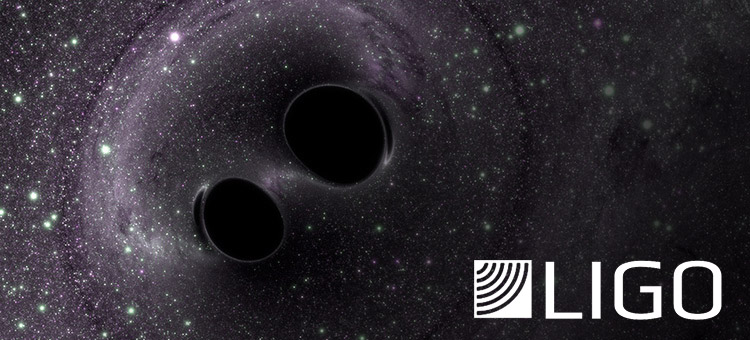
Physicists have announced the discovery of gravitational waves - ripples in the fabric of spacetime that were first anticipated by Albert Einstein 100 years ago. The announcement was made by David Reitze, executive director of the Laser Interferometer Gravitational-Wave Observatory (Ligo), at a press conference in Washington.
The Laser Interferometer Gravitational-Wave Observatory (LIGO) is a large-scale physics experiment and observatory setup to detect these gravitational waves. Cofounded in 1992 by Kip Thorne and Ronald Drever of Caltech and Rainer Weiss of MIT, LIGO is a joint project between scientists at MIT, Caltech, and many other colleges and universities.
LIGO's mission is to directly observe gravitational waves of cosmic origin. These waves were first predicted by Einstein's general theory of relativity in 1916, when the technology necessary for their detection did not yet exist. These gravitational waves were successfully detected on September 14, 2015 by both of the Twin LIGO detectors based in Louisiana and Washington USA. While the actual experiments were located in USA , the ICTS-TIFR group in Bengaluru, were significant contributors in estimation of the mass and spin of the final black hole and the energy and peak power radiated by the gravitational waves. These initial estimates of masses and spins were obtained by supercomputer simulations of binary black holes.
Direct detection of gravitational waves has long been sought and the announcement of their discovery is the climax of a century of speculation, 50 years of trial and error, and 25 years perfecting a set of instruments so sensitive they could identify a distortion in spacetime a thousandth the diameter of one atomic nucleus across a 4km strip of laserbeam and mirror. Boston is proud to announce they played a significant role in providing some of the technology that was required for this historical achievement
Boston Limited is proud to be associated with ICTS-TIFR , and not only helped in designing the solution but also built the solution in its UK facility. Compute intensive simulation at TIFR required a supercomputing cluster which could perform rigorous floating point calculations of complex binary black holes. This cluster played a pivotal role in performing simulations and recording the results. Boston's cluster which is in situ at ICTS-TIFR's Bangalore campus, consists of 32 compute nodes. It can theoretically perform 20 Teraflops - a staggering 20 trillion floating point operations per second. This piece of technology is powered by the latest Intel Haswell dual socket processors which operate at 2.4 Ghz and have 8 core or 16 threads for parallel calculations. The supporting hardware is powered by Supermicro, which bring years of experience and reliability to supercomputing. Boston utilized the FatTwin series in the cluster, which helped to lower the power consumption , increase the cooling efficiency and increase compute density. Because of the compute intensive nature of simulations, the cost was reduced by simply choosing Gigabit Ethernet as the interconnect. The complete cluster is supported by a Network file system (NFS) storage solution designed by Boston and has a total capacity of 80TB, and is supported by high availability enterprise class SAS drives. The NFS is connected to head nodes with 10g connectivity. Master or head nodes were designed specifically for supporting a large user base which could compile and built their code with ease. Head nodes are equipped with high speed solid state drives and compute nodes have 10,000 rpm SAS drives for high throughput. Apart from the main storage the solution also had a 100 TB archival storage.
Prof Neil Turok, director the Perimeter Institute for Theoretical Physics at Waterloo in Canada, and a former research colleague of Prof Stephen Hawking, said that the discovery signals a new era in astronomy.
"For me the most exciting thing is we will literally be able to see the big bang. Using electromagnetic waves we cannot see further back than 400,000 years after the big bang. The early universe was opaque to light. It is not opaque to gravitational waves. It is completely transparent.
"So literally, by gathering gravitational waves we will be able to see exactly what happened at the initial singularity. The most weird and wonderful prediction of Einstein's theory was that everything came out of a single event: the big bang singularity. And we will be able to see what happened."*
*Source: theguardian.com